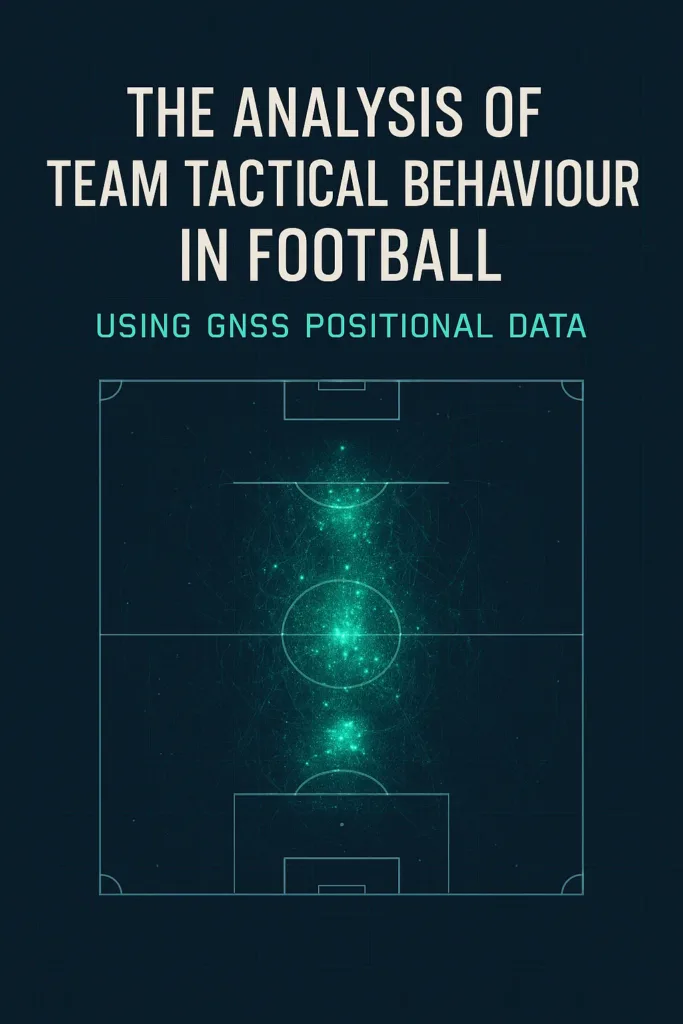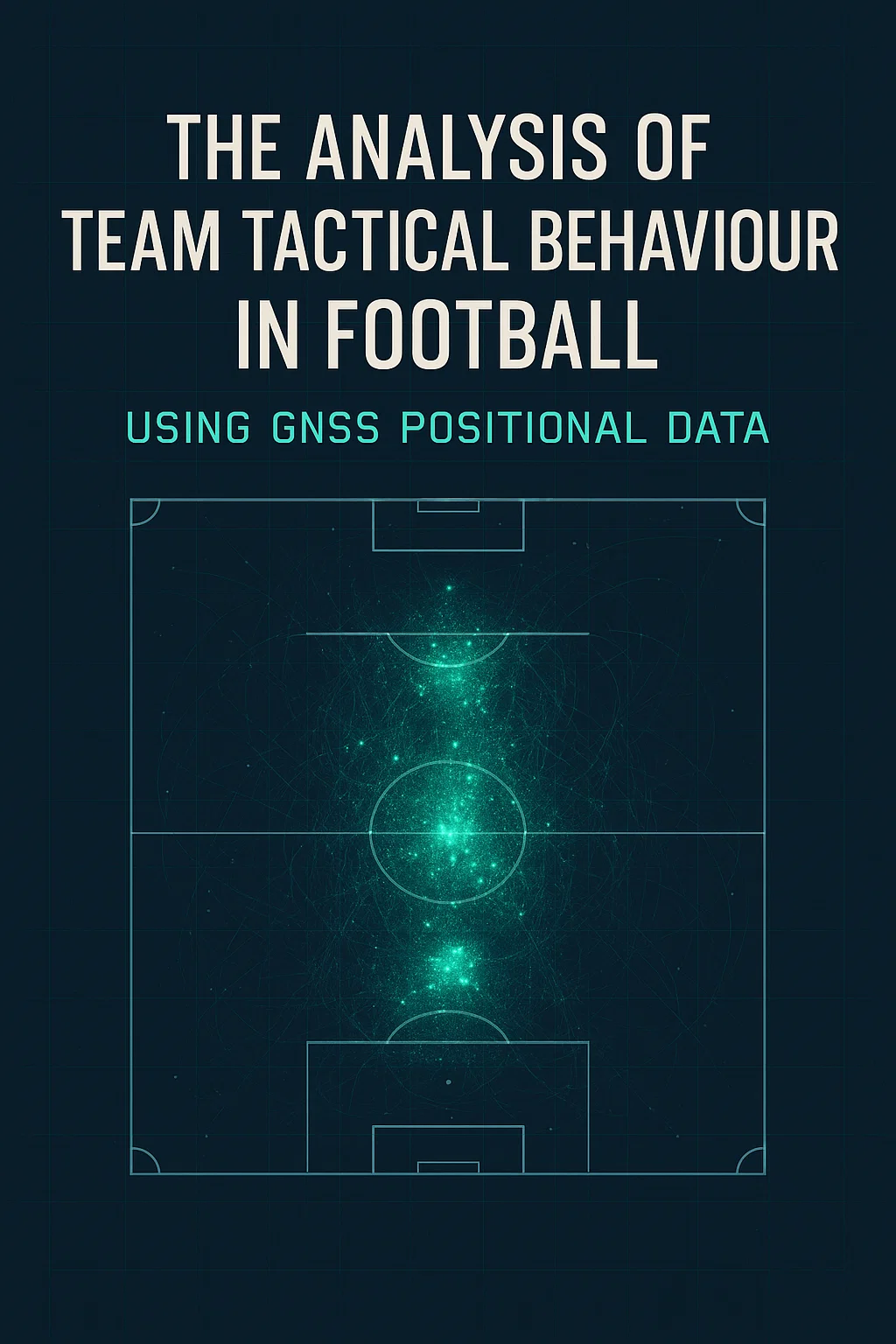THE ANALYSIS OF TEAM TACTICAL BEHAVIOUR IN FOOTBALL USING GNSS POSITIONAL DATA

THE ANALYSIS OF TEAM TACTICAL BEHAVIOUR IN FOOTBALL USING GNSS POSITIONAL DATA
Introduction: The Data Revolution in Football Tactics
The beautiful game is undergoing a profound transformation, shifting from an art form guided by intuition to a science driven by data. At the forefront of this revolution is the use of Global Navigation Satellite System (GNSS) technology, which provides a rich, objective, and continuous stream of positional data for every player on the pitch. This technological leap has moved tactical analysis beyond post-match video review and into the realm of real-time, quantitative evaluation of team tactical behaviour. No longer are coaches limited to what they can see with the naked eye; they can now measure the invisible structures and dynamics that truly define a team’s performance.
This article serves as a comprehensive guide to understanding and applying GNSS positional data for advanced football analysis. We will explore the fundamental metrics, delve into sophisticated tactical concepts they reveal, and provide a practical framework for integrating this data into a coaching workflow. From validating the principles taught in the UEFA B License Coaching Manual PDF to exploring the complex models discussed in the UEFA Pro License Course PDF, this resource bridges the gap between traditional coaching wisdom and cutting-edge sports science. By the end, it will be clear that GNSS positional data is not just for data scientists; it is an indispensable tool for the modern coach seeking a competitive edge through a deeper understanding of team tactical behaviour.
Section 1: The Foundation – Understanding GNSS Technology and Core Metrics
Before interrogating the data, one must understand its source and fundamental building blocks.
1.1 What is GNSS and How Does it Work in Football?
GNSS (Global Navigation Satellite System) is a satellite-based technology that includes constellations like GPS (USA), GLONASS (Russia), and Galileo (Europe). In football, players wear a lightweight vest or a chip-integrated sports bra containing a GNSS receiver. This device triangulates signals from multiple satellites to calculate the player’s precise location on the pitch, typically at a rate of 10 to 20 times per second (10-20 Hz). This generates a massive dataset of positional data—X and Y coordinates—for each player, throughout a session or match.
1.2 From Raw Data to Actionable Insights: The Core Derived Metrics
The raw X,Y coordinates are just the beginning. Through computational processing, we derive a suite of metrics that describe physical output and basic spatial relationships:
- Physical Load Metrics:
- Total Distance Covered: Differentiated into walking, jogging, running, and sprinting distances.
- High-Speed Running (HSR): Distance covered above a speed threshold (e.g., >5.5 m/s).
- Player Load: A composite metric that incorporates acceleration, deceleration, and change of direction to represent overall mechanical stress.
- Acceleration/Deceleration Counts: The number of intense bursts and stops, which are metabolically more costly than steady-state running.
- Fundamental Spatial Metrics:
- Team Surface Area: The polygonal area covered by the outfield players. A larger area may indicate a stretched shape, while a smaller one suggests compactness.
- Team Centroid: The geometrical center point of the team, calculated from the average X and Y coordinates of all outfield players. Its movement reveals the team’s collective tendency to push up or drop deep.
Section 2: Decoding Team Tactical Shape – Spatial Analysis
The true power of GNSS positional data is unlocked when we use it to analyze the team’s structural organization—the foundation of all team tactical behaviour.
2.1 Measuring Defensive Compactness and Stability
A core principle of defending, as taught in the UEFA A Licence: The Complete Coach’s Guide PDF, is compactness. GNSS positional data allows us to measure this objectively.
- Length and Width of the Defensive Block: By calculating the spread of the defenders and midfielders, we can quantify how compact the team is. A narrow and short block is considered compact.
- Distances Between Defensive Lines: The average vertical distance between the deepest defender and the highest midfielder is a critical metric. A successful high-press team, for instance, will maintain a very small distance between these lines to restrict space for the opponent.
- Synchronization of Defensive Movement: By analyzing the correlation of movement vectors, we can see how unitized the back four moves. Do they step up in unison, or are movements staggered and disorganized?
2.2 Quantifying Attacking Structure and Principles
Similarly, attacking principles from the Principles of Play Attacking PDF can be measured.
- Effective Playing Space: The area a team occupies during possession. Data can show if a team is effectively using the width of the pitch or is too narrow.
- Player-to-Player Distances: The average distance between teammates in different phases. In build-up, optimal distances (e.g., 10-15 meters between defenders and midfielders) are crucial for connectivity. Data can identify when these distances are too large (risking isolation) or too small (crowding the play).
Section 3: The Dynamics of Play – Analysing Phase Transitions
Football is a game of transitions, and GNSS positional data is exceptionally well-suited to analyzing the dynamic team tactical behaviour in these critical moments.
3.1 Offensive to Defensive Transition (ODT)
The moments after losing possession are when a team is most vulnerable. Data can objectively assess a team’s reaction.
- Reaction Time: The time it takes for the team centroid to start moving backwards after a turnover. A slower reaction time indicates poor transition discipline.
- Counter-Pressing Intensity: The average speed of the 3-5 players closest to the ball in the 5 seconds after possession loss. This quantifies the famed gegenpress, a concept heavily influenced by the intense philosophies explored in Marcelo Bielsas Football Philosophy PDF. High intensity here is a marker of a well-drilled, aggressive team.
3.2 Defensive to Offensive Transition (DOT)
Conversely, data can reveal how a team exploits transitions to attack.
- Explosiveness in Attack: The speed and acceleration of players making forward runs upon winning possession.
- Space Occupation in Transition: How quickly the team’s surface area expands to stretch the recovering opposition. A rapid expansion indicates a team trained to attack space immediately.
Section 4: Advanced Tactical Concepts Revealed by Positional Data
Moving beyond basic shape and transitions, GNSS positional data allows us to probe sophisticated tactical concepts that were previously only discussed qualitatively.
4.1 Creating and Exploiting Superiorities
A key tenet of positional play is creating numerical, positional, and qualitative superiorities. Data can identify these situations.
- Identifying Numerical Overloads: By defining zones on the pitch (e.g., the final third, the wings), algorithms can automatically detect when the attacking team has more players in a specific zone than the defending team. This provides concrete evidence of a tactical plan in action, such as the ones designed in UEFA A Coaching Session Plans.
- Measuring Control of Key Zones: Data can track the percentage of time a team spends in possession in the “half-spaces”—the corridors between the wide and central areas. This is a crucial metric for teams that build their attacks through these zones, as detailed in formations discussed in the Essential 3-5-2 and 3-4-3 Training Exercises PDF.
4.2 Tactical Periodization and Training Load Management
The concept of Tactical Periodization, which dictates that training should mimic the demands of the match, can be perfectly monitored with GNSS.
- Validating Session Intent: A coach designing a session focused on high-pressing can use GNSS data to confirm that the players indeed achieved the intended high-speed running and acceleration counts in the relevant areas of the pitch. This turns a generic The Training Plan into a scientifically validated one.
- Acute:Chronic Workload Ratio (ACWR): By monitoring rolling averages of metrics like Player Load, sports science staff can optimize training load to maximize fitness and minimize injury risk, ensuring players are physically prepared to execute the tactical model.
Section 5: The Practical Application – From Data to the Training Pitch
Collecting data is futile if it does not lead to improved performance. Here is how to close the loop.
5.1 Post-Match Analysis: Beyond the Result
Instead of just reviewing goals and chances, a coach can now review the data.
- Case Study: Defensive Fragility. Suppose a team concedes two goals from counter-attacks. Traditional analysis might blame individual errors. GNSS positional data might reveal that, in both instances, the distance between the defensive and midfield lines was over 35 meters, creating a exploitable space. The solution then becomes a tactical one, addressed on the training ground.
- Benchmarking Against Models: Academies like the Leicester City Football Club Academy PDF and Sheffield United F.C. U14 Academy likely use internal benchmarks for metrics like compactness and pressing intensity for their age groups. Performance can be measured against these ideal models.
5.2 Designing Data-Informed Training Sessions
The insights from data should directly influence training design.
- If data shows poor compactness: The coach can design a UEFA B License Coaching Sessions PDF-inspired session using conditioned games from the 60 Training Games PDF that reward the team for maintaining a specific maximum distance between lines.
- If data shows lethargic transitions: The coach can implement transition-based drills from Soccer Training Programs where GNSS is used live to provide immediate feedback on reaction speed and explosiveness. Even the Warm-Up Exercises with Ball PDF can be tailored to include high-intensity, directional movements that prime the nervous system for the session’s tactical focus.
5.3 Communication and Player Buy-In
Data is most powerful when understood by the players. Visualizations—heat maps, passing networks, and animations of team shape—are incredibly effective tools for communicating tactical instructions and providing objective proof of concepts discussed in the AFC B Diploma Coaching Course Certificate PDF. Showing a player a video of a moment alongside the data visualization of the team’s shape makes abstract tactical concepts concrete and actionable.
Conclusion: The Synergy of Science and Art in Modern Football
The integration of GNSS positional data into football analysis represents a paradigm shift in how we understand team tactical behaviour. It provides an objective, quantitative lens through which the subtle, complex patterns of the game can be measured, analyzed, and optimized. This guide has journeyed from the basic metrics of distance and speed to the advanced analysis of tactical shapes, phase transitions, and the creation of strategic superiorities. We have demonstrated that the concepts enshrined in coaching curricula, from the foundational UEFA B License Coaching Manual PDF to the elite-level UEFA Pro License Course PDF, are not just philosophical ideas but are measurable, trainable behaviors.
However, it is crucial to conclude with a note of wisdom: data is a guide, not a gospel. The numbers generated by GNSS positional data must always be interpreted within context by a skilled coach. The final decision on team selection, in-game adjustments, and cultural management will always be an art, informed by experience, intuition, and human understanding. The goal is not to replace the coach with an algorithm, but to empower the coach with deeper insight.
The future of football analysis lies in this synergy. By combining the objective power of GNSS positional data with the subjective wisdom of experienced coaches, teams can achieve a level of strategic preparation and performance optimization previously unimaginable. For those committed to this path, the resources are vast—from the internal frameworks of top academies to the global knowledge found on external platforms like StatsBomb for advanced analytics and The Athletic for contextualized football intelligence.
Embrace the data, but trust your eyes. Measure everything, but understand the context. This is the new blueprint for winning in the modern game, where the analysis of team tactical behaviour using GNSS positional data is the key to unlocking a team’s full potential.

